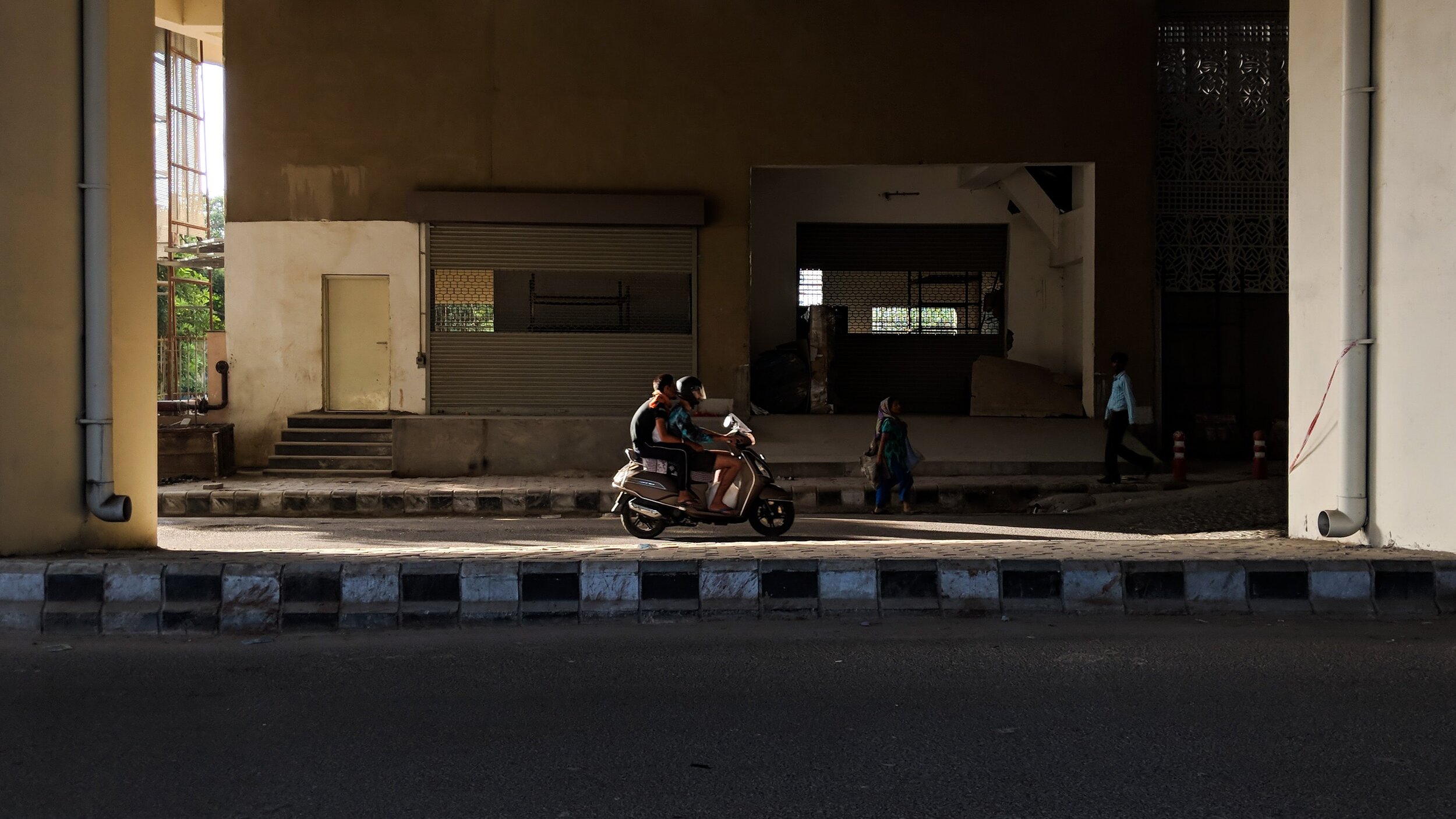Behind the Flag
Shivani Radhakrishnan
January 2021
In the video, smoke twists, snaking out in front of the Capitol building, the lines of hard-hatted security personnel obscured by Trump flags and Stop the Steal signs. An airhorn blows in the background. And then in the distant video, watching the riots outside the US Capitol in early January, I noticed a flag emerging on the screen’s right: the Indian tricolor, bringing into visual relief the connections that have become more pronounced in the last few years, thinking about the Modi and Trump administrations, and the connections between Indian and American politics. “We have journeyed to a place from which it looks unlikely that we can return, at least not without some kind of serious rupture with the past — social, political, economic, and ideological” Arundhati Roy writes in her recent book Azadi. She’s describing the Coronavirus pandemic, but I think too about this moment in history and the opportunity to rethink what an alternate, more inclusive future looks like for India: in the wake of the 2019 general election that saw Modi and the Bharatiya Janata Party remain in power, in the face of the Citizenship Amendment Act and farmer’s protests sweeping the country, and now, in the wake of the pandemic, there’s much to be desired in the collective project of reimagining both India and the political landscape writ large. The scene at the US Capitol building suggests the ways that the Indian diaspora is a part of domestic US politics, a fact we've been reminded of much in recent months, but the inverse of this is true too: that people of Indian origin have an essential role to play not only in the countries where they reside but in reenvisioning a more inclusive India too.
This fact has been known to nationalists in India, and those interested in building a more cohesive future for India — especially diasporic Indians — should be privy to this way of thinking too. If they aren’t, they risk ceding diasporic influence to the right-forces embodied in the BJP and the figure of Modi. Former BJP Finance Minister Yashwant Sinha said several years ago that “people of Indian origin are extremely important sources of support for the Indian Government in the execution of its policies through the influence and respect they command in the countries in which they live.” This truth — that the diaspora, including people who were born abroad — are essential to rallying support and influence for the Indian state’s policies has been borne out during Modi’s reign. From Howdy Modi, the collaborative appearance in Houston that featured Modi alongside Trump, and the number of diasporic donors in Silicon Valley who secured Modi’s first and second terms through extensive donations, to the most recent call for investment in India by the diaspora, right factions in India seem fully aware and able to draw on Indians abroad in their strategizing about India’s domestic and foreign policy.
While Modi often plays on the diasporic nostalgia by using language that conceives of Indians abroad — even foreign-born Indians — as part and parcel of the Indian nation, lauding their achievements and wealth, and using the group for press and legitimacy both inside and outside India, the phenomenon is broader. One problem is what scholar Vijay Prashad calls “Yankee Hindutva” - how on account of nostalgia for India, diasporic Indians are often misled into thinking US organizations that claim to do “cultural work” and “enrichment” around religious values are neutral and abstracted from domestic political movements in India. On the contrary, many of these organizations and their fundraising efforts directly connect to Hindutva political candidates in India (a secular democratic organization in Massachusetts describes how the claim to do “cultural work” in some diaspora organizations has been used “raise funds for activities that lead to communal riots in India.”)
Given the role of the diaspora — whether acknowledged or not — in shaping Indian domestic policy, it’s clear that disengagement is not possible. It becomes, then, the responsibility of Indians like me, people born in the US and elsewhere, to think about our influence in achieving a more inclusive Indian nation, one free from the grip of Hindutva and BJP rule. That means linking with other Indians interested in these efforts. And yet, there’s a challenge embedded in this task, especially for someone like me. To speak about Indian domestic politics as an NRI is to encounter resistance. “But you’re an Indian at arm’s length, you don’t quite know the situation on the ground --- you don’t live here!” Whether the pushback is explicit or merely imagined, NRIs on the left too often and too quickly cede ground in these conversations, deciding that they don’t have the requisite standing to speak out about Indian politics. What’s left out of such conversations, however, is that we are always already being mobilized within India, and that if we fail to take steps to achieving the India that we want to see, we too easily play into the hands of the Hindutva right and their strategies for organizing the diaspora.
Watching the videos of the US capitol building that day, I paged through Arundhati Roy’s introduction to Azadi, where she asks: “What lies ahead?” The answer she offers resonates: reimagining the world, one that extends beyond India, but also centrally involves it.
*
Shivani Radhakrishnan is a PhD student in social philosophy at Columbia and a writer. She was born and raised in upstate New York and has Tamil and Gujarati roots.

"Untitled," by Mohit Tomar; Mayur Vihar, New Delhi